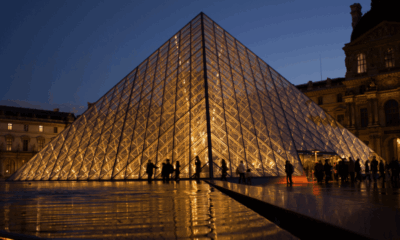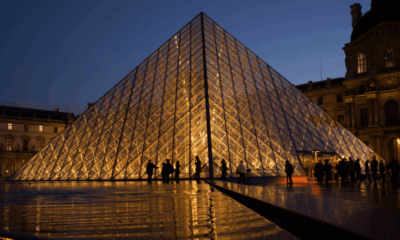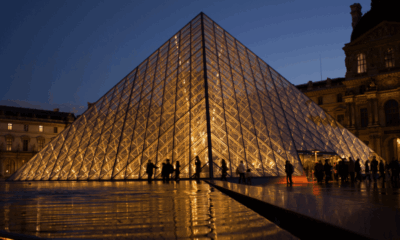Politics
Auckland Museum Enhances Security Following International Heist

In response to a high-profile theft at the Louvre Museum, the Auckland War Memorial Museum is taking proactive steps to enhance its security measures. The Louvre, known for its priceless artifacts, was targeted in a recent heist where thieves made off with $178 million in crown jewels. As museums worldwide reassess their security protocols, Auckland’s museum is focused on maintaining a balance between protecting its extensive collection and ensuring public access.
Balancing Security and Accessibility
Managing a museum filled with over six million items requires careful consideration of both security and visitor engagement. Chief Executive David Reeves emphasizes the importance of this balance. “To make things completely safe, we could put everything in the basement,” he explains. “The safest museum is a closed museum, and we’ve had recent experience with that with our asbestos issue. That’s not what we’re here for.”
During a recent inspection, Reeves provided insights into the museum’s security framework. He highlighted the layers of protection in place, which not only deter thieves but also safeguard against vandalism and protests. Despite the robust measures, Reeves is keen to convey that the museum’s value lies beyond monetary estimates. “Value is such a subjective thing,” he notes, indicating that historical and cultural significance often outweighs financial worth.
Comprehensive Security Measures
The Auckland Museum employs a sophisticated security system that includes both visible and concealed elements. This comprehensive plan allows the museum to confidently host international exhibitions, such as the recent Diva exhibition, which showcased costumes from renowned superstars. Planning for security begins years in advance, taking into account additional factors like air conditioning, visitor services, fire suppression systems, and alarm systems. Notably, the exhibition area is designed without external windows, minimizing security risks.
Reeves asserts that the museum has established a solid reputation for security, which facilitates the lending of artifacts from other institutions. “There’s only a certain number of facilities in New Zealand that would qualify,” he explains, underscoring the significance of their facilities. “We’ve got a pretty good facility here—usually there’s not too much trouble in getting the security clearance.” This security is consistently maintained, rather than ramped up only during special events, ensuring ongoing protection for their collections.
While the museum does not advertise its most valuable items, Reeves emphasizes that the focus should not solely be on their financial value. “For museums, the monetary value is not the point of why they’re being collected or looked after,” he states. Instead, the museum prioritizes cultural and historical significance, understanding that many items hold deep personal meaning for families who have donated them.
Ultimately, Reeves acknowledges the inherent tension between security and accessibility. “It’s more important that things are safe, and accessible, and therein lies the tension,” he reflects. As a public institution, the museum remains committed to fulfilling both roles, ensuring that its treasures are protected while also inviting the public to engage with their rich history.
As the museum continues to refine its security strategies, it highlights the ongoing challenges faced by cultural institutions in the modern world. The lessons learned from international incidents will undoubtedly shape the future of museum security, and the Auckland Museum is poised to adapt accordingly.
-

 World2 weeks ago
World2 weeks agoPrivate Funeral Held for Dean Field and His Three Children
-

 Top Stories3 weeks ago
Top Stories3 weeks agoFuneral Planned for Field Siblings After Tragic House Fire
-

 Sports3 months ago
Sports3 months agoNetball New Zealand Stands Down Dame Noeline Taurua for Series
-

 Entertainment3 months ago
Entertainment3 months agoTributes Pour In for Lachlan Rofe, Reality Star, Dead at 47
-

 Entertainment2 months ago
Entertainment2 months agoNew ‘Maverick’ Chaser Joins Beat the Chasers Season Finale
-

 Sports3 months ago
Sports3 months agoSilver Ferns Legend Laura Langman Criticizes Team’s Attitude
-

 Sports1 month ago
Sports1 month agoEli Katoa Rushed to Hospital After Sideline Incident During Match
-

 Politics2 months ago
Politics2 months agoNetball NZ Calls for Respect Amid Dame Taurua’s Standoff
-

 World3 weeks ago
World3 weeks agoInvestigation Underway in Tragic Sanson House Fire Involving Family
-

 Top Stories3 weeks ago
Top Stories3 weeks agoShock and Grief Follow Tragic Family Deaths in New Zealand
-

 Entertainment3 months ago
Entertainment3 months agoKhloe Kardashian Embraces Innovative Stem Cell Therapy in Mexico
-

 World4 months ago
World4 months agoPolice Arrest Multiple Individuals During Funeral for Zain Taikato-Fox





















